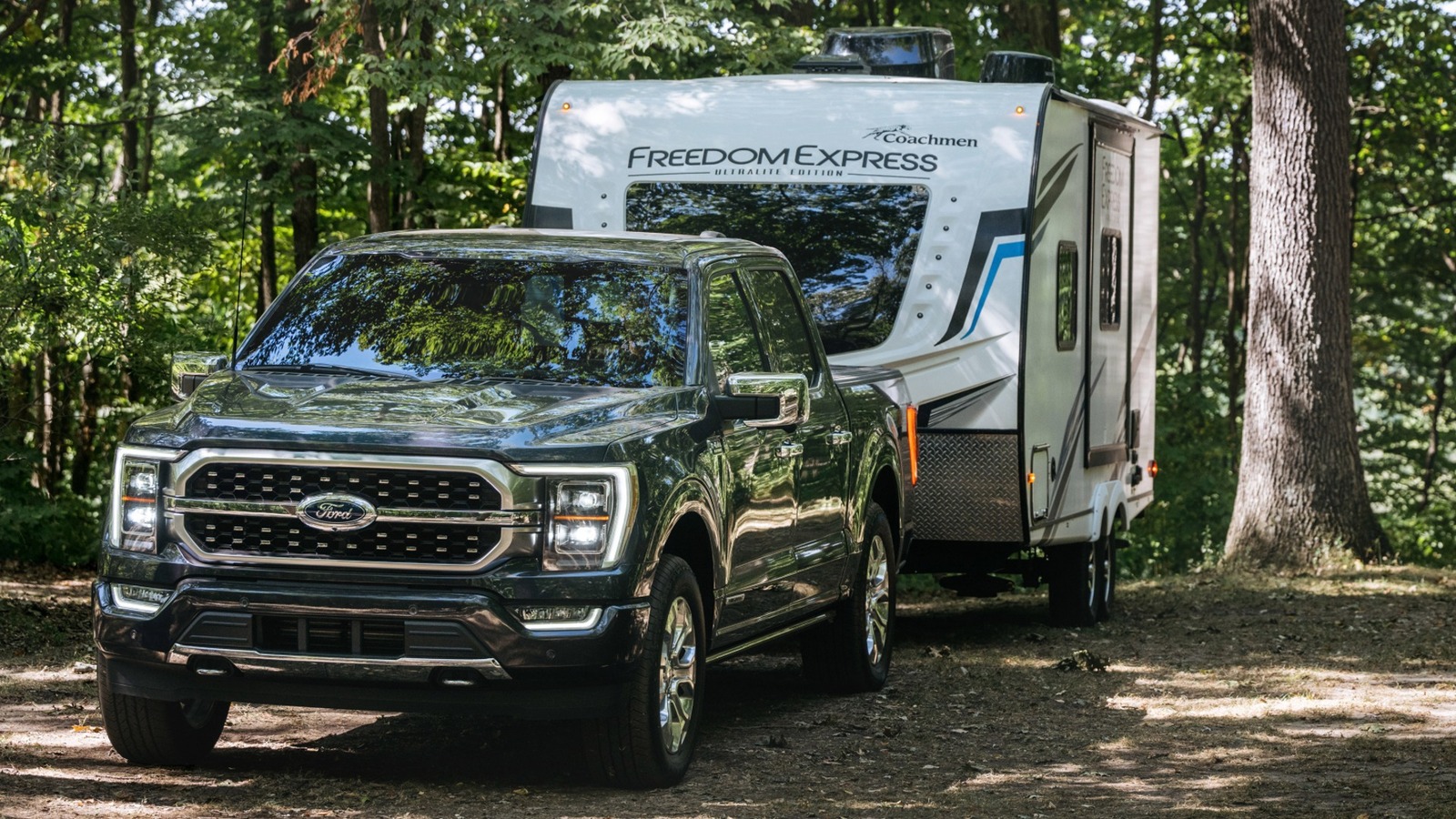
Whether you’re thinking about buying a towable camper or just need to haul a heavily loaded trailer, it’s important to understand the relationship — and differences — between payload and towing capacity. Too often, people focus on one or the other, hitch up a trailer, and hit the road, only to be surprised when something goes wrong. While the best vehicles for maximum towing capacity will also have highly rated payload capacities as well, it’s common to find a towing combination that exceeds one value without going over the limit on the other. This situation frequently causes newer midsize trucks to have the worst towing capacity ratings.
Advertisement
First, we should establish that both values are equally important. But what is the difference between these terms? In a nutshell, payload capacity is the amount of extra weight a vehicle can carry. This is computed by deducting the vehicle’s curb weight from its Gross Vehicle Weight Rating (GVWR). Towing capacity is a function of how much the vehicle and trailer can weigh together; you’ll get this figure by deducting the curb weight and payload from the Gross Combined Vehicle Weight Rating (GCVWR). Towing capacity is more than the payload because the majority of the towed weight rests on the trailer’s axles, suspension, and tires.
How does the trailer’s weight affect payload capacity?
A vehicle’s GVWR is calculated based on how it’s equipped, so its axles, tires, frame, and suspension all come into play. Curb weight is how much the vehicle should weigh when empty. That means everything added to it -– running boards, truck topper, fuel, tools, luggage, passengers, and the family dog –- counts as payload.
Advertisement
Automakers typically provide payload capacity ratings either in the owner’s manual or on a sticker inside the vehicle. However, since the weight of everything added counts as payload, you can’t carry a load that weighs as much as the indicated figure because, at the very least, you have to account for the weight of the driver and some fuel.
A similar payload situation occurs when towing. Conventional towing, commonly called bumper pull, typically places 10% to 15% of the trailer’s loaded weight onto the trailer ball at the rear of the vehicle. When towing a 3,000-to-4,000-pound trailer, that can be as much as 600 pounds of tongue weight. That tongue weight is considered payload as well since it’s carried by the vehicle.
Advertisement
How to determine a vehicle’s ideal towing capacity
Questions about towing and payload capacity are most often asked when someone is considering towing a heavy trailer, such as a camper, boat, or equipment, with an existing or potentially new vehicle. Hopefully, you don’t already own the truck and the trailer and are trying to figure out if it’s safe. You should not base that safety on the opinion of anyone trying to sell you one vehicle or another.
Advertisement
For example, let’s determine how much a half-ton truck can tow conventionally. We’ll assume we already own a 2021 Ford F-150 SuperCrew Cab FX4 equipped with the 5.0-liter V8 engine, the Heavy-Duty Payload Package, and the Max Trailer Tow Package. According to Ford, that truck has a GVWR of 7,850 pounds and up to 13,000 pounds of conventional towing capacity. If your Ford is equipped with Onboard Scales, you can see trailer weights in real-time as you load.
Staying below the maximum values by 10% is a good rule of thumb. With that in mind, we’ll calculate 90% of the 13,000-pound maximum tow rating. Now, we’re looking at towing a trailer with a max weight of 11,700 pounds.
Is the truck in our example capable of towing an 11,700-pound camper?
We should keep in mind that camper weights are typically listed as dry weight and don’t include water in the holding tanks or any gear and supplies you’ll load into it for your camping trip. So, we’ll think about a camper with a 10,000-pound dry weight and load up to 1,700 pounds in it.
Advertisement
How you load the trailer is a critical component to safe towing. While having 10% to 15% of the trailer weight on the tongue is ideal, you won’t want to put too much weight in the front — that can put undue pressure on the trailer tongue frame and add unnecessary weight to the payload. However, too much weight behind the trailer’s axles can contribute to trailer sway and lead to loss of vehicle control.
While the 11,700-pound loaded trailer is within our maximum towing margin of safety, we need to consider our truck’s payload capacity. Our example F-150 has a 2,650-pound payload capacity, which becomes 2,385 pounds with our safety margin. Our 11,700-pound trailer could have a tongue weight of 1,755 pounds when calculated at 15%. That leaves about 630 pounds for passengers and gear. With that, we could take four passengers with an average weight of 150 pounds and a 30-pound dog on a camping trip.
Advertisement




